Town Hall – MoCA
Mo.C.A. – Montecatini Terme Contemporary Art
Montecatini Terme
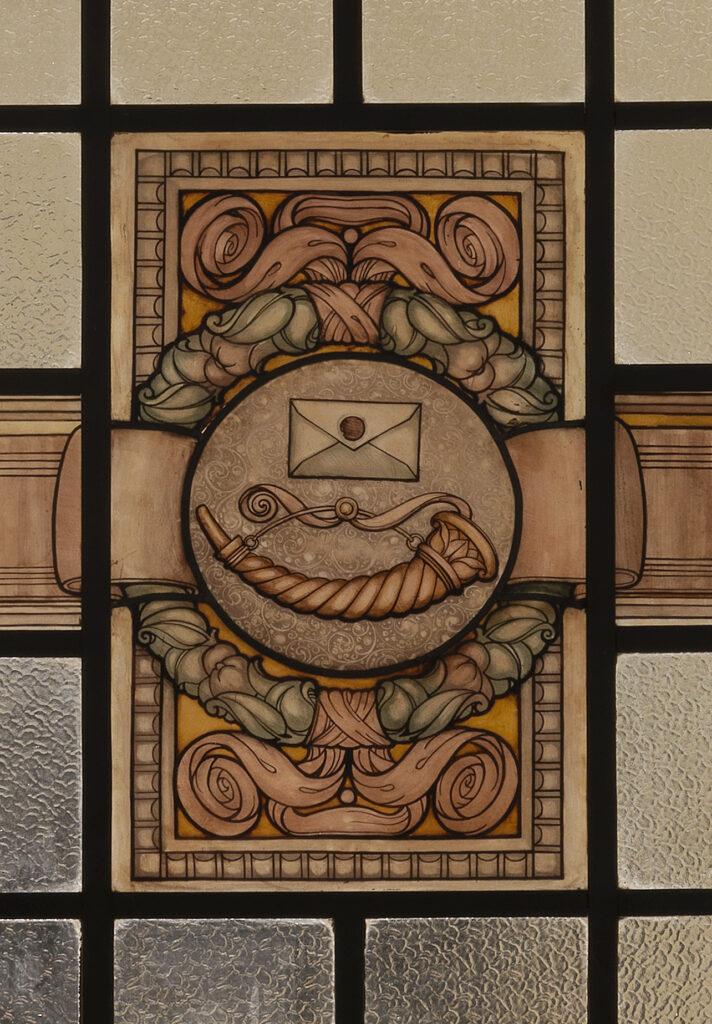
In 1911 the Town Council, certain of Montecatini’s “brilliant future” owing to the lively ferment around the Spas, a fashionable meeting place attracting personalities from all over the world, voted to build a new Town Hall to be appropriate in size to the role that the resort town was assuming.
The construction of a new building functional to the growing town’s administrative needs but also elegant and rich in details, took many years to complete, also due to the war in the meantime. It was finally completed in 1919, and inaugurated September 26, 1920. Galileo Chini with his enterprise “Manifattura Fornaci San Lorenzo” had been commissioned in 1918 to design the skylight above the grand staircase, the glass partitions there and on the ground floor, and the stained glass windows of the former Post Office, today used as an exhibition space: the Mo.C.A. Montecatini Terme Contemporary Art.
In addition, Chini painted a pictorial cycle around the central skylight on the upper level, where he depicts a celebration of the return to peace after the calamities of WW1, clearly indicated by the mottoes that can be found in the central lunettes on the four sides of the painted ceiling: Know / In peace / Work / Build (see insight).
On the ground floor of the municipal building is Mo.C.A. – Montecatini Terme Contemporary Art, a small but prestigious civic gallery holding one of the largest paintings by Mirò in the world, Dona voltada d’un vol d’ocells, which in this occasion confronts and dialogues with Galileo’s latest works of the exhibition entitled “Galileo Chini – Works in public and private collections in Montecatini Terme”.
As a stage setting for this masterpiece and others, many never seen before, the stained glassworks that adorn the Mo.C.A. and the wall murals and glassworks of the Town Hall, all works by Galileo and his factory.
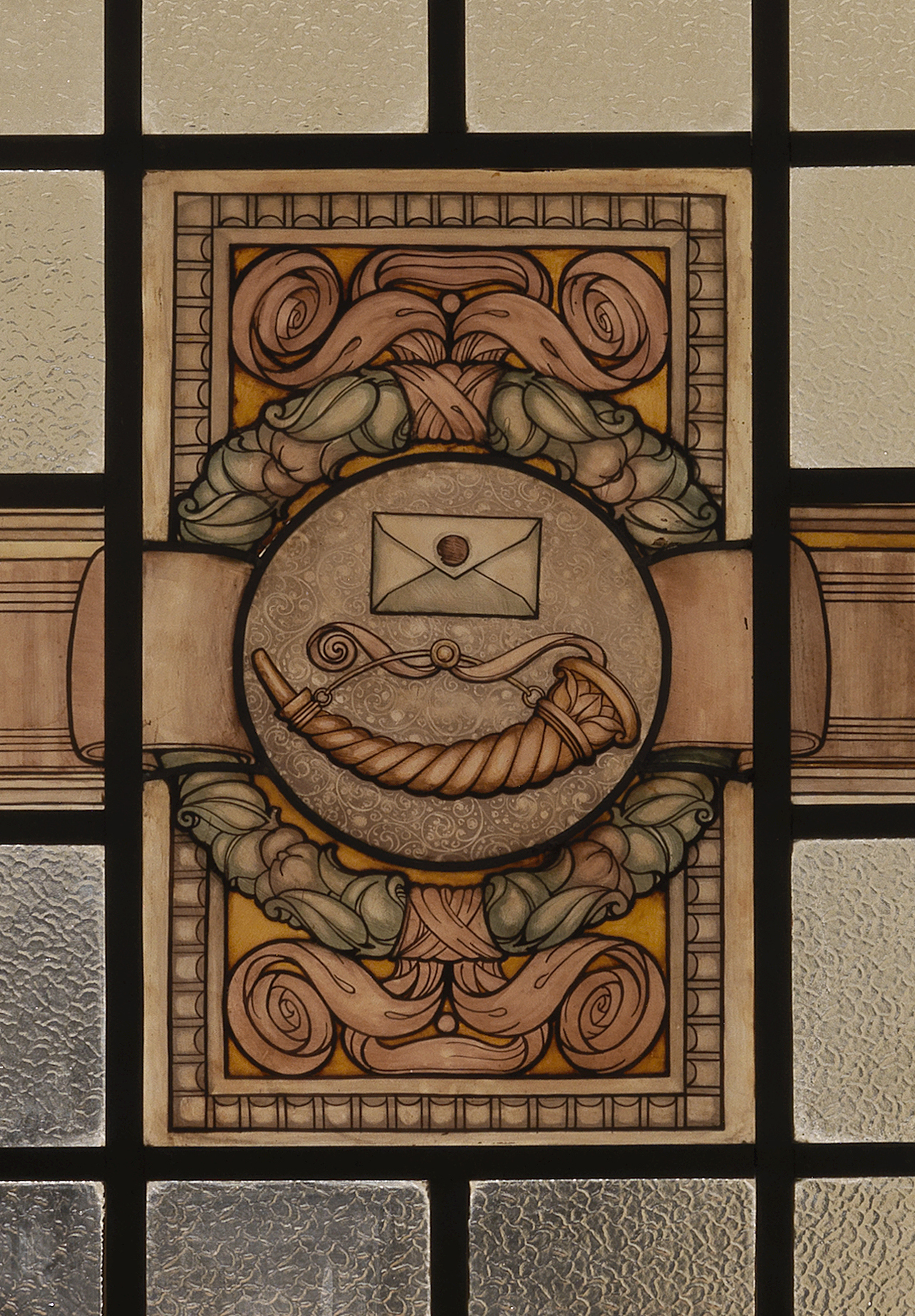
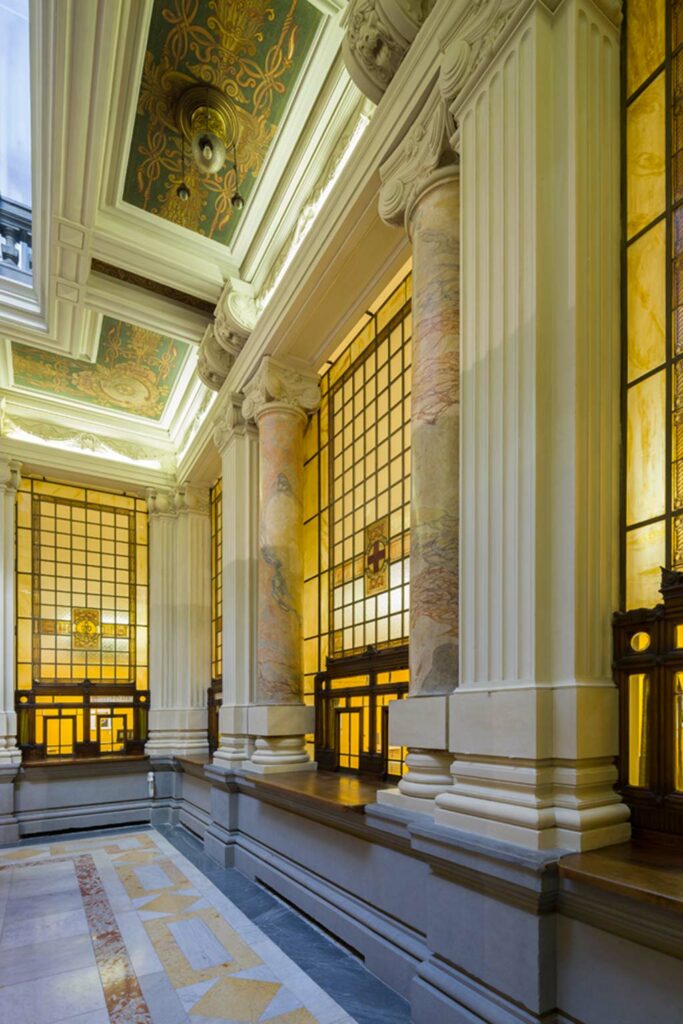
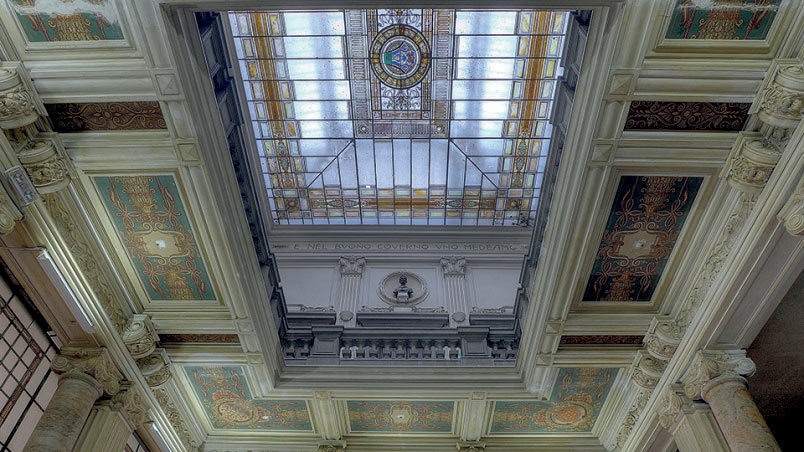
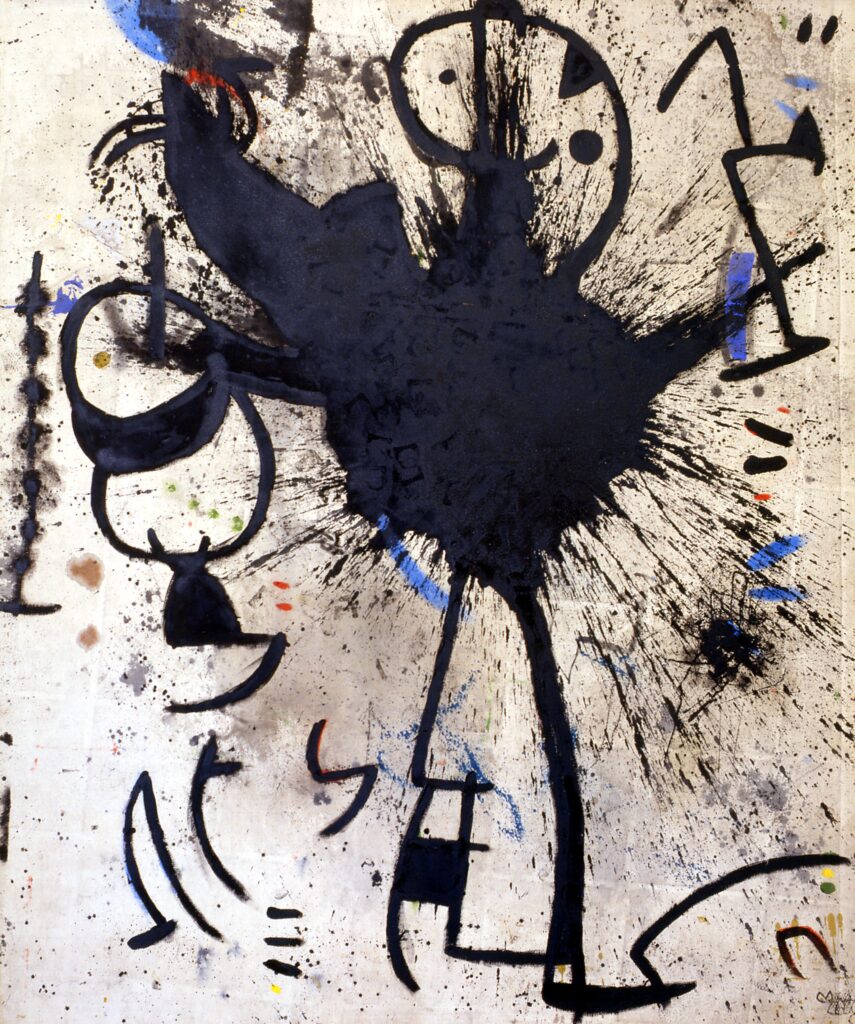
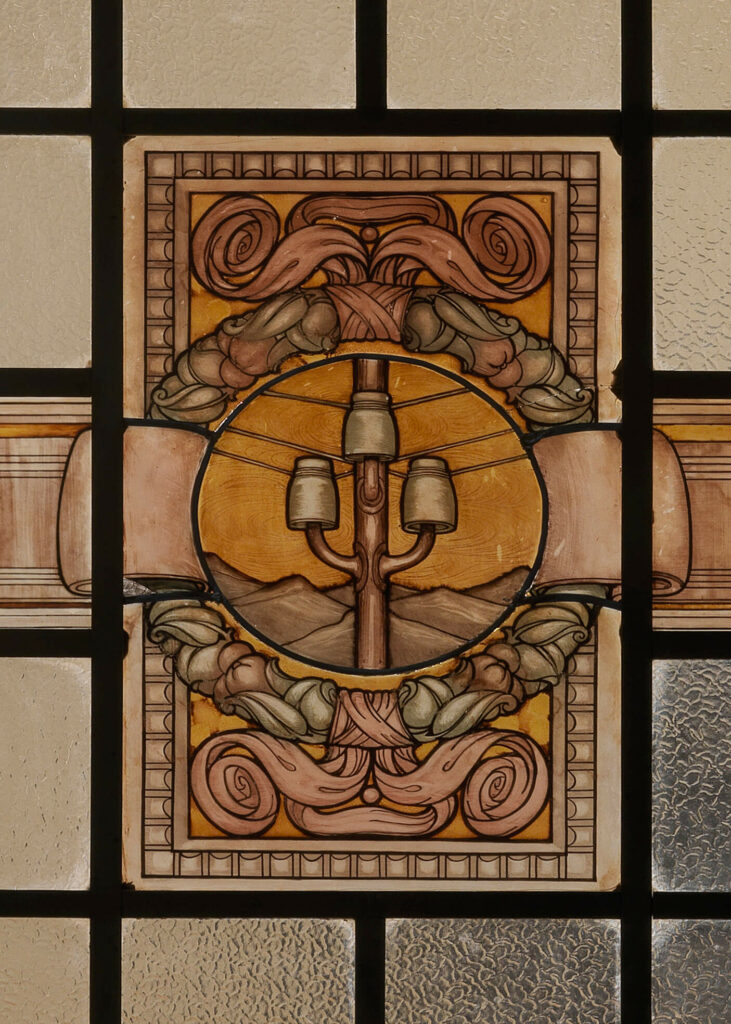
The sidea with the mottoes
Each of these mottoes is held by winged cherubs with robes and ribbons flowing in the wind. Going up the staircase, the wall in front of the visitor shows the motto Sapere (Know): in the vaults of the ceiling are depicted a man with a laurel wreath holding a cartouche and declaiming, representing Poetry, and a winged cherub hovering above a peach blossom holding in one hand an olive branch and the other a statue of Victory, allegory of the human spirit which rises victorious thanks to peace.
Opposite Know is the wall where we find the summary and general affirmation: In peace. Here is depicted Mercury, patron god of commerce, in peace returning to prosperity restraining a white horse, and a woman dispersing flowers. She represents Spring that “perennially renews itself” (as Chini had already entitled his panels for the 1914 Venice Biennale) symbolizing the ideal rebirth of humanity.
On the side with the motto Build, to the left of Know, we see a builder constructing a wall and other workers building a ship.
On the side with the motto Work, we see a farmer intent on the harvest and a woman who, with her child in her arms, is intent on treating the flocks.
With these portrayals Chini indicates how humanity can flourish and prosper only in peace and harmony. At present these splendid murals are only partially visible.
They are undergoing restoration thanks to an agreement with the “Palazzo Spinelli Institute for Art and Restoration” in Florence.